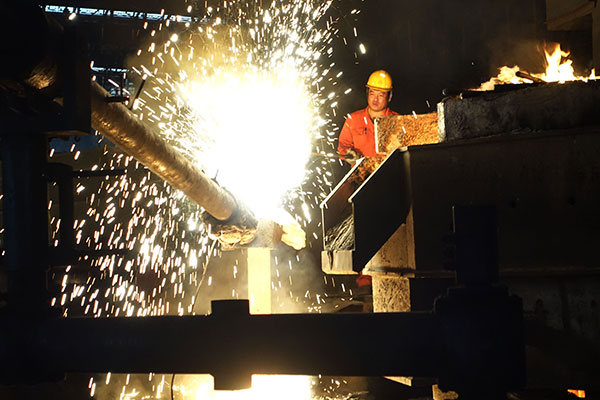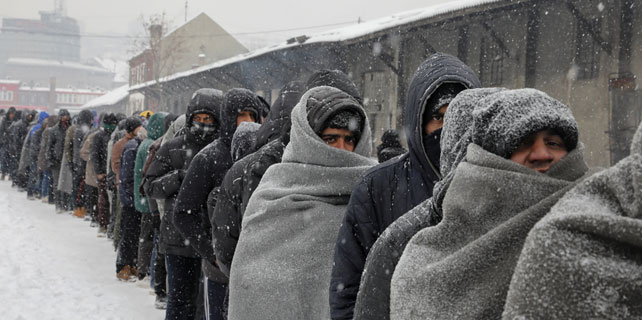Reform SOEs to revitalize Northeast China
 |
|
Workers at a steel factory in Dalian, Liaoning province. [Photo/China Daily] |
To revitalize the northeast of China, we should first analyze the problems of its undesirable development nowadays.
Thanks to its fertile black earth, Northeast China has abundant natural resources, which enabled the region to achieve self-sufficiency in the agricultural era.
But its abundant natural resources also caused dependence on its long-term resource-oriented development that undermined the pursuit of other growth paths and innovation capacity. Meanwhile, the unique meteorological conditions of the region, especially the cold weather in winter, means people have developed a lifestyle that only works for half a year. Once the region's resource advantage disappears, development in local areas may fall into a passive position.
Moreover, the planned economy had a deep and longlasting influence on Northeast China, and its industry is mainly heavy industry and industry related to the exploitation of its natural resources, industries that were imperative to the country's construction under the planned economy.
The northeast of China therefore has followed a development path that remained dependent on the planned economy even after reform and opening-up. But the market changed after reform and opening-up, and the region has gradually lost its competitive edge. The development trend of the region is like that of manufacturing in the United Kingdom, which boomed at first and then stagnated.
Moreover, the free flow of talent and capital after reform and opening-up has meant there has been an exodus of the talent and capital necessary for the region's development.
The revitalization of Northeast China requires industrial adjustment and upgrading, but it is hard for it to achieve that goal on its own. Considering the tremendous contribution it has made to the country's social and economic development, it is reasonable that the country provides necessary support to revitalize the region.
The main problem of the region's economy that needs addressing is that its ratio of State-owned companies and heavy industry is too high, and the region lacks a sufficiently large and active private economy.
It makes little sense to promote the region's development through so-called opening up or going global on a national basis. The revitalization of Northeast China should be "genetic", changing the region's State-owned genes into the genes of a market economy.
To revitalize the Northeast region, we should improve both the intrinsic factors and the external environment. People in the region should gradually cultivate a market economy with the support of the central government and other regions.
First, the local governments in the region should improve their efficiency and deepen their understanding of a market economy so they can create a good environment for the development of the private economy.
Second, assistance from other developed regions is necessary as well. Northeast China should also learn from the successful market economy experiences of other regions, rather than simply bringing in some specific projects.
Third, it is urgent to launch reform of the State-owned enterprises in the Northeast China. Mixed ownership should be promoted in this region.
Fourth, the foundation of a country should be its real economy. China has made great efforts to develop its real economy and has promoted the development of its manufacturing industry, which means it should pay enough attention to the Northeast China, since it was the country's heavy industry base.
The strong industrial base of Northeast China is the region's development opportunity at present. The central government should help the region to adjust and upgrade its manufacturing industry to the internationally advanced level.
In addition, the region has a broad development prospect in agriculture due to its unique natural conditions and resources. Thus the national strategy of developing real economy is a good opportunity for the region's agricultural industry, as well.
The author is a professor of economics at Renmin University of China.
- SOE reform leads to rising stock prices
- China SOE profits rise 2.8% in Jan-Nov
- China eyes breakthroughs in SOE reform
- China rolls out new performance evaluation rules for central SOE heads
- Platform to help clear SOE debts
- Chinese SOE profits grow as economy improves
- SOE reform key to northeast region's revival









